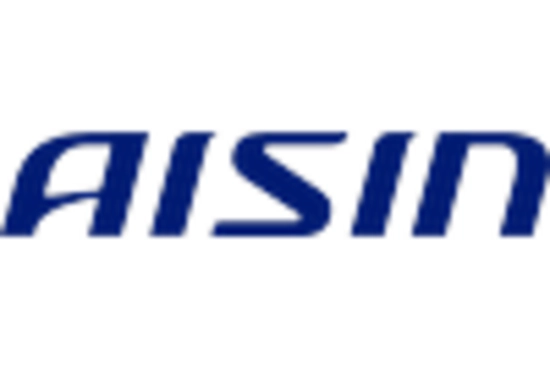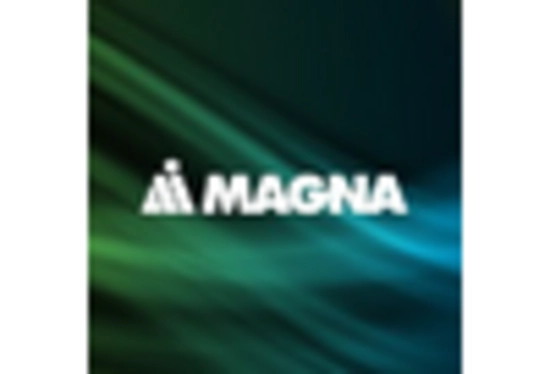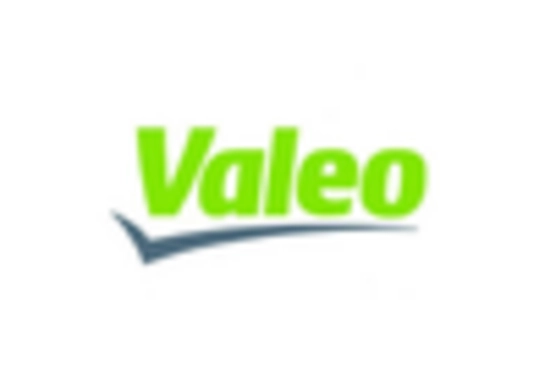Increase in Vehicle Electrification
The trend towards vehicle electrification is significantly influencing the Automotive Door Lock Detection Sensor Market. As electric vehicles (EVs) gain traction, manufacturers are increasingly focusing on integrating advanced locking systems that align with the unique requirements of electric drivetrains. The rise in EV adoption is evidenced by a projected increase in global electric vehicle sales, which are expected to reach 30 million units by 2030. This shift necessitates the development of sophisticated door lock detection sensors that can seamlessly integrate with electric vehicle systems. Consequently, the Automotive Door Lock Detection Sensor Market is likely to witness substantial growth as manufacturers adapt to the evolving landscape of vehicle electrification and consumer preferences.
Rising Demand for Vehicle Safety Features
The Automotive Door Lock Detection Sensor Market is experiencing a notable surge in demand for enhanced vehicle safety features. As consumers become increasingly aware of safety concerns, manufacturers are compelled to integrate advanced locking mechanisms that provide real-time feedback on door status. This trend is supported by data indicating that approximately 70% of consumers prioritize safety features when purchasing vehicles. Consequently, the incorporation of door lock detection sensors is becoming a standard in modern vehicles, driving growth in the market. Furthermore, regulatory bodies are imposing stricter safety standards, which further propels the adoption of these sensors. As a result, the Automotive Door Lock Detection Sensor Market is poised for significant expansion, as manufacturers strive to meet consumer expectations and regulatory requirements.
Regulatory Compliance and Safety Standards
Regulatory compliance and safety standards are critical drivers of the Automotive Door Lock Detection Sensor Market. Governments worldwide are implementing stringent regulations aimed at enhancing vehicle safety, which includes the integration of advanced locking systems. Compliance with these regulations is not only essential for market access but also for consumer trust. Data indicates that regions with strict automotive safety regulations are witnessing a higher adoption rate of door lock detection sensors. This regulatory landscape is compelling manufacturers to innovate and enhance their product offerings to meet safety standards. Consequently, the Automotive Door Lock Detection Sensor Market is likely to experience growth as manufacturers prioritize compliance and invest in advanced technologies to ensure vehicle safety.
Technological Advancements in Sensor Technology
Technological advancements are playing a pivotal role in shaping the Automotive Door Lock Detection Sensor Market. Innovations in sensor technology, such as the development of more sensitive and reliable detection mechanisms, are enhancing the functionality of door lock systems. For instance, the integration of capacitive and ultrasonic sensors is becoming increasingly prevalent, allowing for more accurate detection of door status. Market data suggests that The Automotive Door Lock Detection Sensor is projected to grow at a CAGR of 7.5% over the next five years, indicating a robust demand for advanced sensor solutions. This growth is likely to benefit the Automotive Door Lock Detection Sensor Market, as manufacturers seek to incorporate cutting-edge technologies to improve vehicle security and user experience.
Growing Consumer Preference for Convenience Features
Consumer preferences are shifting towards convenience features in vehicles, which is significantly impacting the Automotive Door Lock Detection Sensor Market. Features such as keyless entry and remote locking are becoming increasingly popular, as they enhance the overall user experience. Market Research Future indicates that nearly 60% of consumers express a preference for vehicles equipped with smart locking systems that offer convenience and ease of use. This trend is prompting manufacturers to invest in advanced door lock detection sensors that support these features. As a result, the Automotive Door Lock Detection Sensor Market is expected to grow as manufacturers respond to consumer demands for more convenient and user-friendly vehicle access solutions.

















Leave a Comment